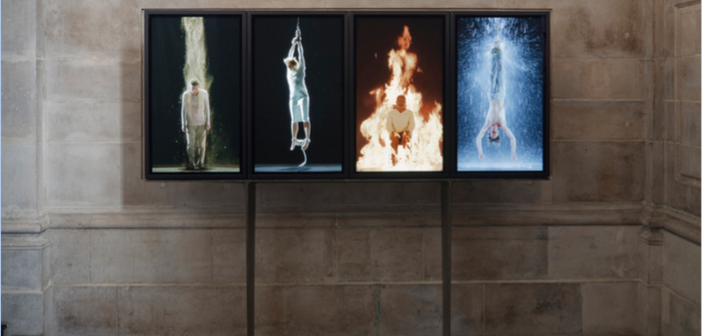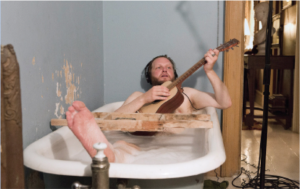In Boston, as well as in the UK, religion has been declining. That is, the idea of "The Church" as an organized body or religious power has been challenged, particularly within younger generations. In 2012 Boston was ranked in the bottom 10 cities in the US with regards to how many citizens identified as very religious. Those that attend church in metropolitan cities, like Boston or Washington D.C., have claimed that the church is fundamentally out of touch with the realities of their lives. Many cite hypocrisy of the church, proclaiming it to be welcoming yet excluding people who do not agree with everything the church says. This exclusivity, particularly with regards to women and people who identify as LGBT+, is a major concern for many people. In Boston, a city that prides itself in being liberal and open minded, this exclusion is seriously problematic.
Fr. Daly, a reverend in D.C. who is seeing less and less people attend his church, draws an interesting conclusion regarding critiques of the Catholic Church being out of touch with the realities of young people. While he expresses concern about the decrease of practicing Catholics, he is still optimistic that these people, despite rejecting the Church as an institution, still uphold many of its ideals. He calls them idealists, and says their "compassion and hospitality" is admirable, and in line with the main Catholic ideas of love and respect for others. But while Fr. Daly chooses to interpret this as wishing to work separately from the Church, but still in the name of God, I think that many people see these as reasons to move away from religion and towards the idea of faith in humanity. As someone who is not—and never has been—religious, this idea of faith outside an organized church is compelling and is why Bill Viola’s Martyrs was instantly appealing. It shows a fundamental belief in the perseverance of humanity rather than preference for one particular belief system over another.
Walking behind the high altar in the iconic St Paul’s Cathedral in London, you would not expect to be confronted with four plasma TV screens. These screens show the piece Martyrs (Earth, Air, Fire, Water) by Bill Viola, the first permanent video installation in a British cathedral or church. In each video a person is being battered by one of the four elements—Earth, Air, Fire, and Water—remaining calm and steadfast, enduring their pain with resilience. One man sits, his chair gradually being engulfed by flames. Another stands as the ground is pulled up from around him. A woman is suspended by rope as wind pushes her around. And another man hangs upside down, suspended by his ankles in the shape of a cross, as water beats down on him. All of them are serene, unfazed by this test of faith.
In spite of the clear religious connotations, both in the name of the piece and the upside-down cross that alludes to the death of St Peter, this work speaks outside the confines of Christianity. It uses technology to create a sense of community, building on the idea of the Church as the heart of a community, but appealing to humanity instead of a specific religious group. Viola himself is not Christian, but instead considers himself deeply spiritual, an idea he often reflects upon in his work. He has travelled extensively and has been influenced by many religions, ranging from Zen Buddhism to Christianity. Instead of exploring ideas of organized religion in Martyrs, Viola is exploring a more fundamental view of faith. All four of the figures believe that their suffering will end, and it is this notion, rather than any obvious religious devotion, that brings them together through their hardship. Their dedication is truly admirable, and we in turn begin to believe that there are ideas that deserve this kind of commitment.
The four figures in Martyrs seem to share something intrinsic in their character that allows them to withstand the elements. This is particularly poignant considering their placement within the cathedral. The piece is situated close to the memorial for American soldiers that died in the World Wars. In an interview for the Guardian about the wider relevance of Martyrs outside the strictly religious purpose of the cathedral, the Chancellor of Saint Paul’s Cathedral, Reverend Mark Oakley, said the piece questions if there are any ideas that are worth dying for, which is an especially important question with regards to the millions that died defending their right to freedom against invasion and Fascism in the wars commemorated nearby. Whether you interpret the piece as overtly religious, about faith, or about humanity, Martyrs is a tender and respectful homage to those who gave their lives fighting for their ideals. It confirms that some ideas are worth the struggle. The piece ends with a sense of hope: the elements settle and the 4 performers look up, perhaps towards God or perhaps simply because of hope. Perhaps this ending, and the nearby memorial, is an answer to Oakley’s question—a resounding ‘yes’.
The use of high-tech plasma screens in a setting where technology of any kind seems out of place is surprisingly harmonious. Because the video has no sound, while the viewer is immersed in heart-wrenching displays of resilience, they remain in the real world too, aware of the sounds within the cathedral. When I saw the piece, the organist in the cathedral was practicing Bach’s Figure in G major ("Gigue"). This energetic piece clashed with the dark world depicted on the screens. It was a grounding experience. It brought the video in its entirety back to reality, forcing me to see the performers as real people, whose experiences were relevant to my own life, albeit much more theatrical. This infiltration of the everyday into the installation made it more universally relevant. In spite of being made by an American artist for display in an English cathedral, it abandons these confines of identity and finds something innate that unites us.
It is not surprising that an art piece intended for a church aims to bring people together to share in a collective experience. Historically, a church has been a sign of community, and many religious people still feel their place of worship to not only be a place of the divine but also of humanity. In a time where we have become so reliant on technology, to the point where people worry that it actually pushes us apart, the high-tech screens are a much more unusual form in bringing people together. This use of technology to inspire a sense of community instantly reminded me of The Visitors, a video installation by Ragnar Kjartansson that was on display at the Institute of Contemporary Art in Boston this past fall. In The Visitors, eight large screens showed a person either playing an instrument or singing in a different room of the same house. It used technology to create cohesive musical harmonies, as the performers could only sync up through the use of headphones—creating roughly 64 minutes of music. The song itself is based on a song by the artist’s former wife, and the whole piece emphasizes the collaboration between all the performers. When you initially enter the room, each figure is isolated, but as they come together the melancholy turns to something more uplifting. This atmosphere, while certainly less explicitly religious than St Paul’s Cathedral, had a similar air of meditative hope. The performers isolated throughout the house were connected through music, just as the figures in Martyrs were brought together through their suffering. At the ICA, the audience became part of the process of coming together—there was a sense of community within the people who stayed for the full hour of The Visitors, mesmerized by the almost hypnotic nature of the piece. Both Kjartansson and Viola inspire a growing community of empathy for the figures on the screens and in the audience.
Those who saw The Visitors will to an extent be able to understand the overall atmosphere of Martyrs. Both pieces combine art and technology to install a sense of community and hope in the viewer. By using the very thing that is supposedly tearing us apart, both Viola and Kjartansson are making powerful statements about hope in our society. Celebrating the fundamental similarities of humanity, rather than reinforcing its differences, is also reflected in general attitudes towards religion by emphasizing faith over strict organized religion. Even though religious belief and participation is declining in some areas of the US, particularly amongst younger generations, we can see Martyrs as an indication of a change rather than a straightforward rejection of the Church. Viola’s idea of faith and belief appeals to a wide range of young people, including myself. Martyrs can be interpreted as overtly religious, making it relevant to older generations and perhaps more traditional audience members. In the US, the extremes of religious practices are widening, and in a way Martyrs aims to create a dialogue between those who retain their links to tradition through its use of iconography and those who are challenging institutional religion. The audience is exposed to a whole new idea of faith, strength, resilience, and hope, both in ourselves and in one another.
Created by Bill Viola and Kira Perov and opened in May 2014, Martyrs will be joined in 2015 by a second piece entitled Mary. The installations have been gifted to Tate, and are on long-term loan to St Paul’s Cathedral in London, England.


